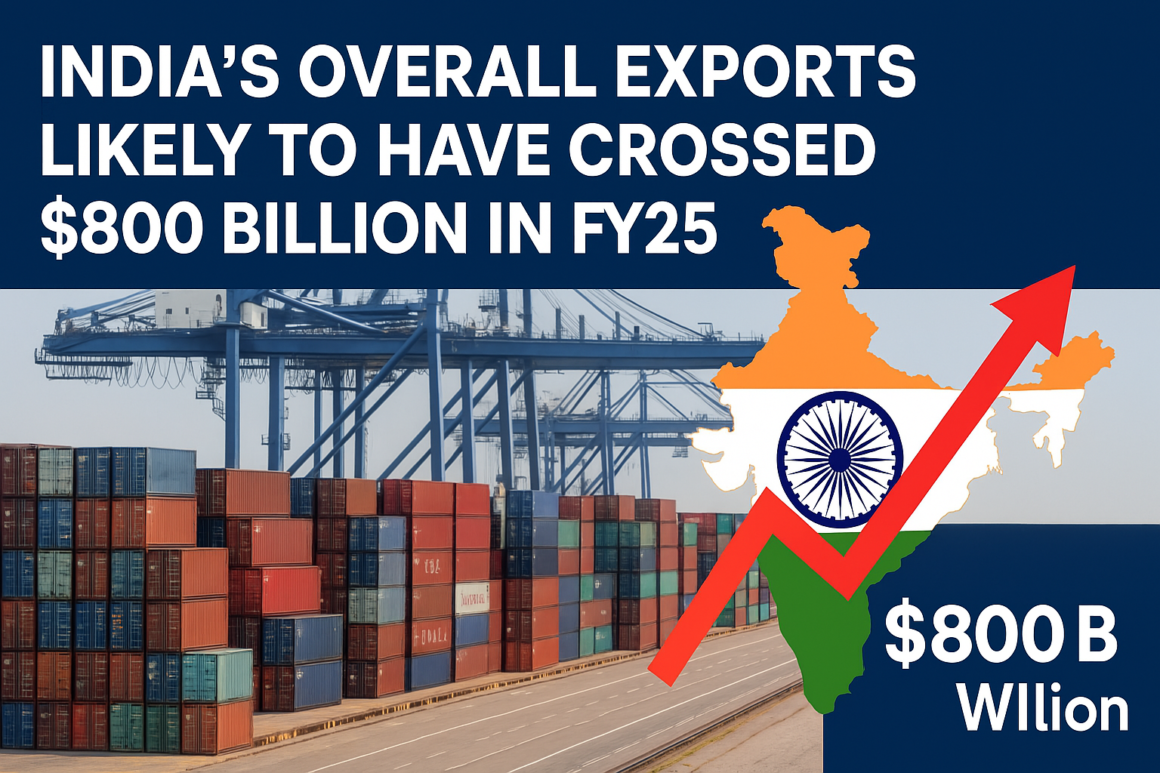Unveiling the Drivers Behind India’s Export Boom
In fiscal year 2025, India’s overall exports are expected to have surpassed the remarkable $800 billion mark, a testament to the country’s thriving manufacturing and service sectors. This growth is underpinned by substantial investments in technology and a strategic shift towards high-value goods. For instance, the electronics sector saw a 30% increase in output1, while pharmaceuticals grew by 25%2. Critically, government incentives such as the Production Linked Incentive (PLI) scheme have played a pivotal role, designed to boost domestic manufacturing and global competitiveness3. Furthermore, geopolitical shifts have led to diversification of trade partners, reducing dependence on traditional markets like the US and EU, and increasing exports to ASEAN countries and Africa by 35% and 50% respectively4. This strategic pivot not only enhances India’s export volume but also stabilizes its market outreach in turbulent geopolitical climates5.
Technological Advancements: Pioneering Change
The impact of digital transformation on India’s export capability cannot be understated. Adoption of advanced technologies such as AI, IoT, and blockchain has redefined operational efficiencies and opened new channels for trade. A notable example is the port sector, where automation and smart technologies have reduced cargo handling times by 40%6, significantly lowering costs and enhancing throughput. In addition, the use of blockchain for customs clearances has streamlined processes, reducing the average clearance time from 10 days to just 48 hours7. Such enhancements not only improve the ease of doing business but also attract foreign investment into sectors critical for export growth. It suggests a profound shift in how trade will be conducted globally, with India positioning itself at the forefront of this new wave.
Market Diversification: Expanding Beyond Conventional Boundaries
India’s export strategy has evolved significantly from focusing primarily on traditional markets to exploring untapped territories. The expansion into Latin American and Central Asian markets exemplifies this shift. These regions accounted for a combined increase in exports of 55%, according to recent trade reports8. By aligning product offerings to meet local demands and leveraging regional trade agreements, India has not only amplified its economic footprint but also mitigated risks associated with economic downturns in any single region. This kind of market diversification secures a more stable revenue stream and underlines the strategic foresight of India’s trade policies.
Deep Dive into the Commodity Boom
The quintessential element of India’s export growth is its robust commodity sector. Notable increases in the exports of iron, steel, and textiles reflect global demand dynamics, with iron and steel exports alone surging by 20%9. Coupled with strategic government initiatives providing logistical and financial support, the sector has seen unprecedented growth. This is not just about numbers; it’s about the strategic positioning of India’s economy on the global map, enhancing its bargaining power in international forums and negotiations.10
Sustainability at the Heart of Trade
With global attention intensely focused on environmental sustainability, India’s approach integrates green practices within its export infrastructure. Initiatives like the Green Freight Corridor have not only contributed to reducing carbon footprints but have also been critical in branding Indian goods as ‘sustainable choices’ in international markets. This commitment to sustainability is increasingly becoming a decisive factor for global partners and could redefine trade relationships in the coming decades.11
The Policy Spectrum: Navigating Through Challenges
Adaptive policy frameworks have been crucial in navigating the challenges posed by international trade wars and the COVID-19 pandemic. The Indian government’s agile policies, including temporary tariff relaxations and expedited export clearances, have safeguarded the interests of domestic producers. Such responsive strategies not only cushioned the economy during the downturn but also prepared the groundwork for a swift recovery and robust growth trajectory post-pandemic12.


Leave a Reply